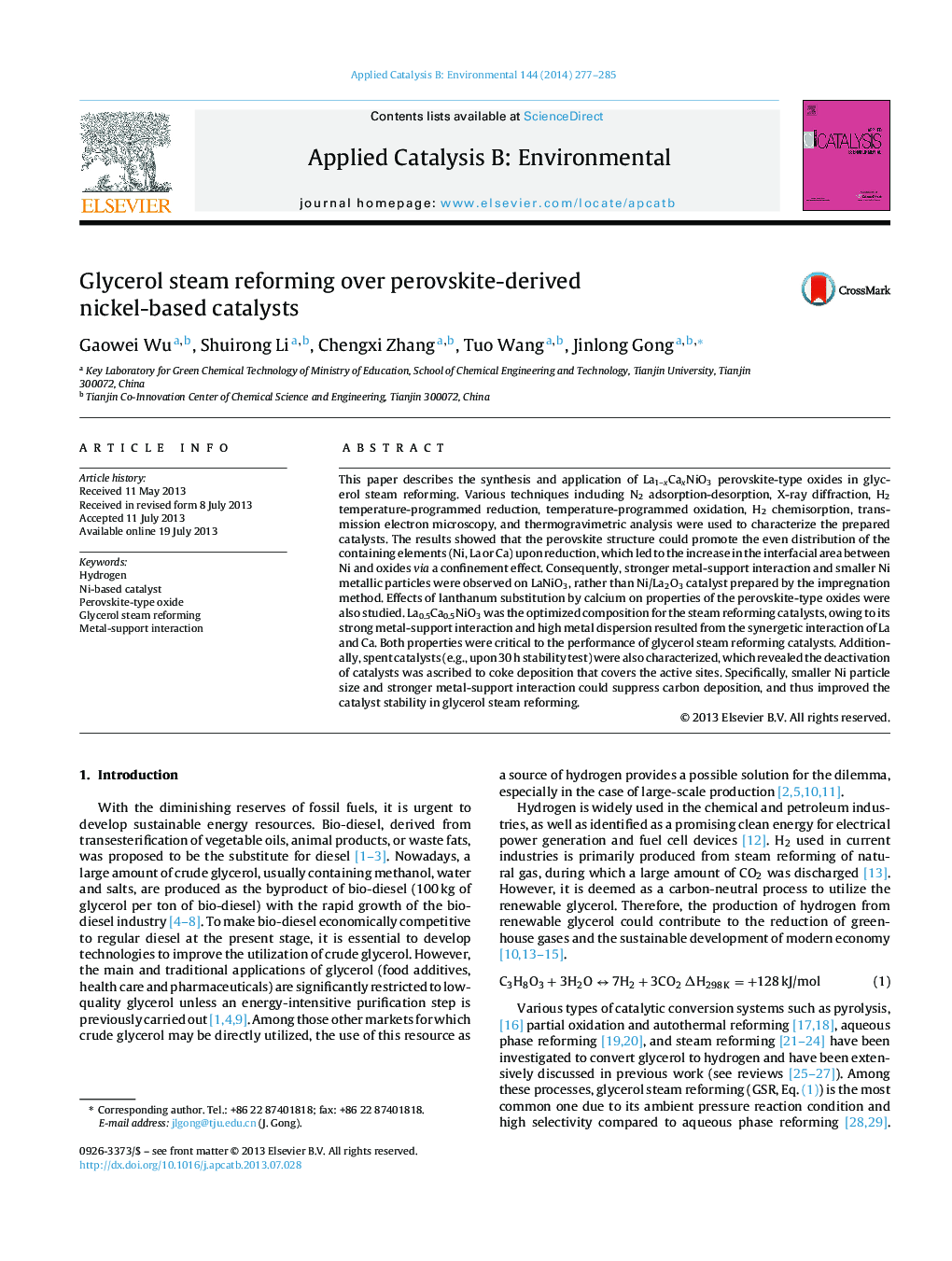| کد مقاله | کد نشریه | سال انتشار | مقاله انگلیسی | نسخه تمام متن |
|---|---|---|---|---|
| 45361 | 46410 | 2014 | 9 صفحه PDF | دانلود رایگان |
• La1–xCaxNiO3 perovskite-type oxides were investigated in glycerol steam reforming.
• The perovskite structure facilitates the uniform distribution of the containing elements.
• The partial substitution of La by Ca significantly affected the surface properties of La1–xCaxNiO3.
• Nickel dispersion and metal-support interaction were critical to the catalytic performance.
This paper describes the synthesis and application of La1–xCaxNiO3 perovskite-type oxides in glycerol steam reforming. Various techniques including N2 adsorption-desorption, X-ray diffraction, H2 temperature-programmed reduction, temperature-programmed oxidation, H2 chemisorption, transmission electron microscopy, and thermogravimetric analysis were used to characterize the prepared catalysts. The results showed that the perovskite structure could promote the even distribution of the containing elements (Ni, La or Ca) upon reduction, which led to the increase in the interfacial area between Ni and oxides via a confinement effect. Consequently, stronger metal-support interaction and smaller Ni metallic particles were observed on LaNiO3, rather than Ni/La2O3 catalyst prepared by the impregnation method. Effects of lanthanum substitution by calcium on properties of the perovskite-type oxides were also studied. La0.5Ca0.5NiO3 was the optimized composition for the steam reforming catalysts, owing to its strong metal-support interaction and high metal dispersion resulted from the synergetic interaction of La and Ca. Both properties were critical to the performance of glycerol steam reforming catalysts. Additionally, spent catalysts (e.g., upon 30 h stability test) were also characterized, which revealed the deactivation of catalysts was ascribed to coke deposition that covers the active sites. Specifically, smaller Ni particle size and stronger metal-support interaction could suppress carbon deposition, and thus improved the catalyst stability in glycerol steam reforming.
This paper describes the synthesis and application of La1–xCaxNiO3 perovskite-type oxides in glycerol steam reforming. The perovskite structure could promote the even distribution of the containing elements (Ni, La or Ca) upon reduction, which led to the increase in the interfacial perimeter between Ni and oxides via a confinement effect.Figure optionsDownload as PowerPoint slide
Journal: Applied Catalysis B: Environmental - Volume 144, January 2014, Pages 277–285
